In the realm of pool maintenance, maintaining proper chlorine levels is paramount for pristine water quality. Two common tools employed for this task are chlorine floaters and chlorine feeders. Both methods play a crucial role in simplifying the chlorination process, offering pool owners versatile options to suit their preferences and needs. Understanding the distinctions between these two chlorinators is key to making informed choices for effective pool sanitation.
Types of Chlorinators
Chlorine Floaters
Place up to 3 lbs of 3-inch tablets into the container, close the lid, adjust the baffle vent at the bottom, or drill holes in the side, and float it in the pool. Chlorine Floaters are the simplest and most inexpensive chlorinators. Their disadvantage is that they are not as precise, nor as large, as Chlorine Feeders.
Chlorine Feeders

Place 3-inch tablets, up to 9 lbs, into the chamber and close the lid. Installed last on the line, after the filter and any other equipment, Chlorine Feeders are either plumbed In-line, glued into the PVC return line, or installed Off-line with thin hoses and injectors drilled into the pipe. Either way, adjust the chlorine flow with a dial that ranges from 1-10.
How to Use a Chlorinator
Chlorine Floaters
For each 5000 gallons of pool water, add one 3″ chlorine tablet. Open the baffle or vent at the bottom, fully open. The wider open, the greater the dissolution rate.
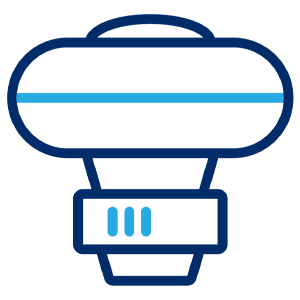
The two variables you have to control with a floater are 1) the amount of tablets you put in, and 2) how far open (or closed) the baffles or vents are at the bottom.
Your test kit will tell you if you are using enough chlorine tablets. If your chlorine test is over 2.0 ppm, you may be able to use less tablets, or close the baffles more, and if your chlorine test is under 1.0 ppm, you should use another tablet, or open the vents more.
- Remove Chlorine Floaters when using the pool, if there will be any rough waters. You don’t want it tipping over and spilling its contents.
- Tie off the floater to a ladder or rope hook anchor. You don’t want it to float around and get stuck on a ladder, skimmer, or step.
- Be careful when the baffles are wide open, that the small slivers of tablets don’t fall out, which can stain both vinyl and plaster pools. Place slivers in the skimmer basket.
- You can use half tablets too, score them with a screwdriver, and break it in half with your hands, underwater in the skimmer basket.
Chlorine Feeders
For each 5000 gallons of pool water, add one 3″ chlorine tablet, more or less. Choose a mid-point setting on the 1-10 dial. The higher the setting, the greater the dissolution rate.
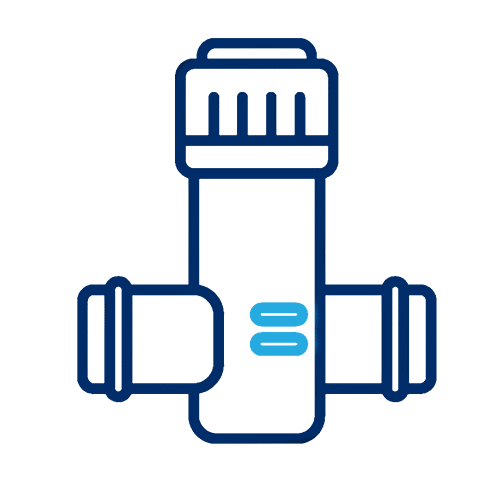
A setting of 5 may be too high, and it depends on the number of tablets in the feeder. You could fill it full, with 15 tablets, and put it on a setting of 1-2, or add only 2 tablets and put it on a setting of 8-9.
Your test kit will help you determine the proper dial setting for your chlorinator. If you are in the habit of adding tablets once per week, experiment with dial settings and your test kit, to find the sweet spot of tablet concentration, and dial setting, to produce a consistent 1-2 ppm chlorine level.
- Install Chlorine Feeders In-Line, plumbing them into the return line when space on the return pipe is available. If not, an Off-Line model can be used just as effectively with slightly higher total cost of ownership, for new hoses/fittings every 5 years.
- Keep a Viton rubber chlorine feeder lid o-ring well lubricated, and replace if it becomes stretched or pinched.
- At season end, remove all chlorine pieces from the chlorinator, and store with a loose lid, to allow any residual chlorine gas to escape.
- Once per year, use a scraper tool to remove residue near the inside-top of the chemical feeder chamber, and clean any screens or inlet/outlet orifices.

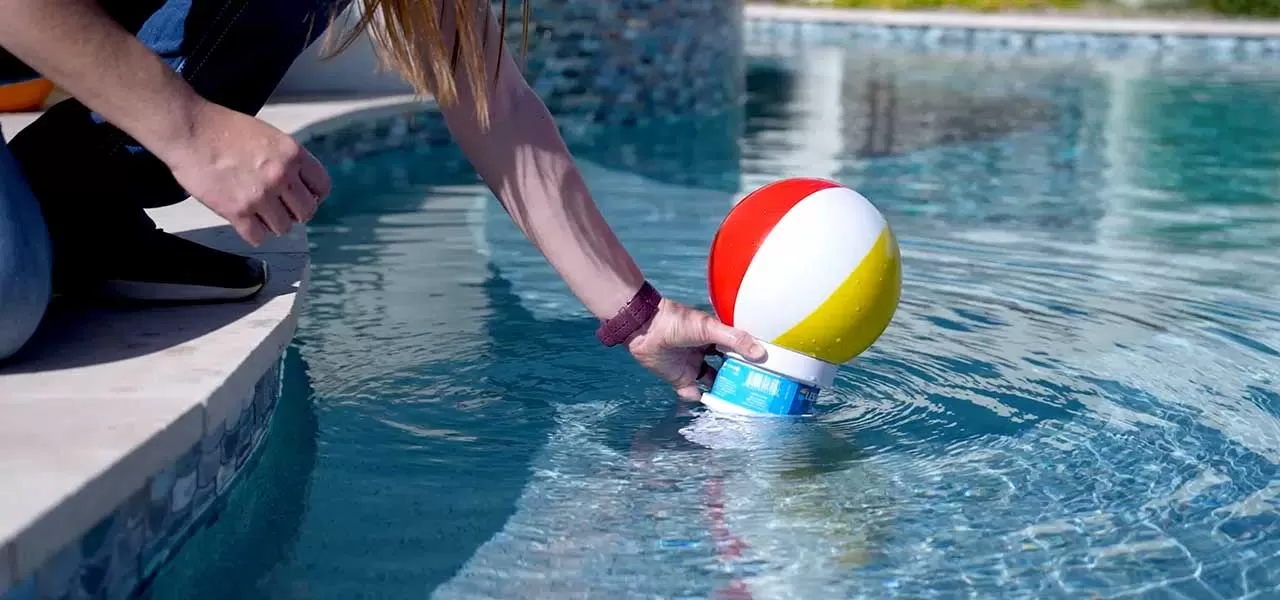




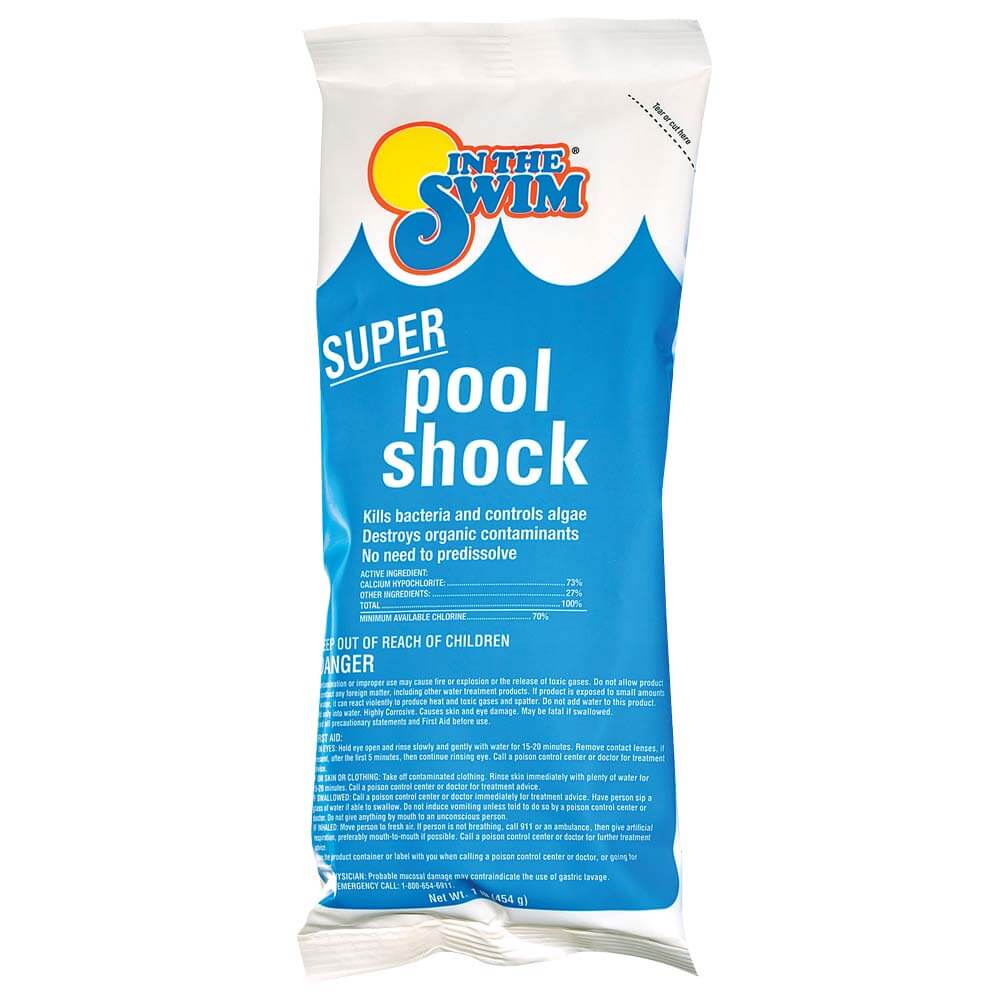
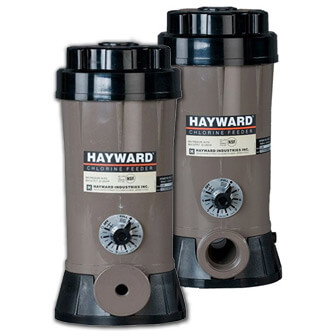
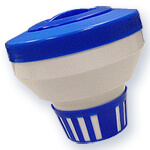

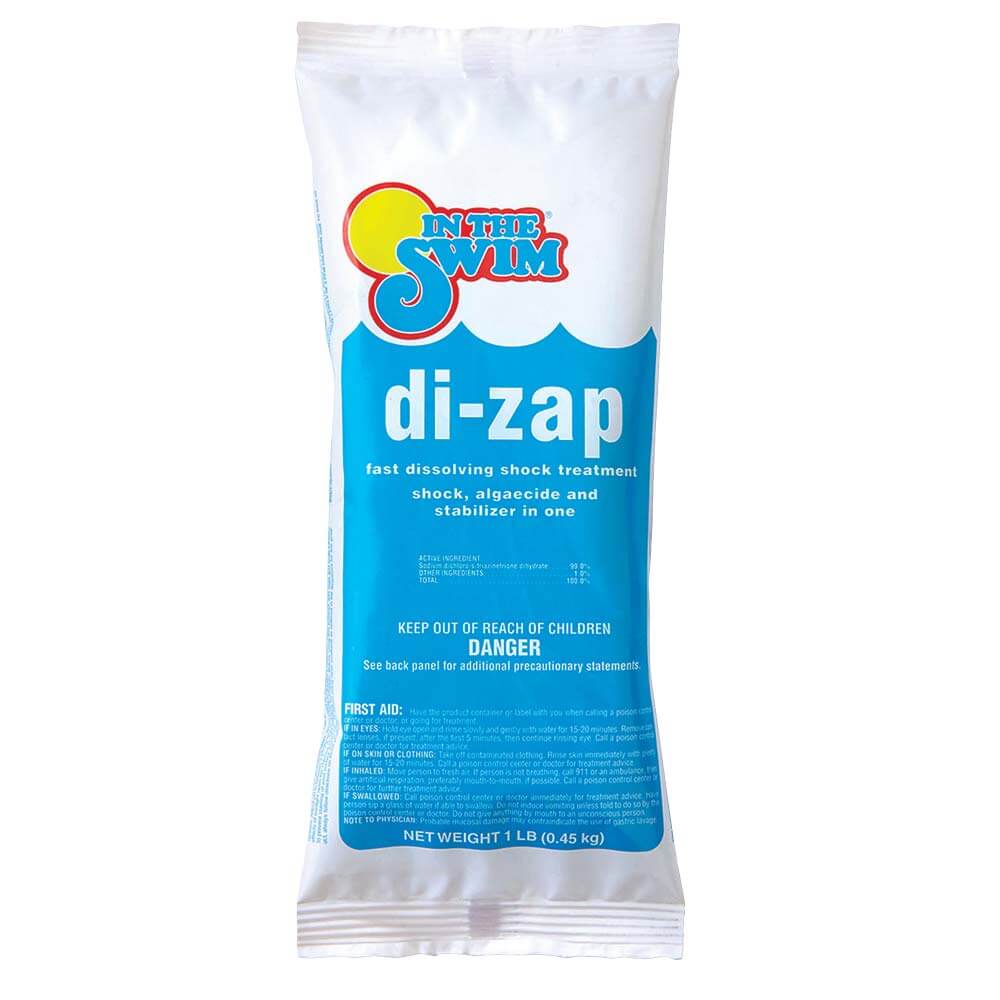

I have a 3” tab in my floater in an above ground pool 12 ft round). The chlorine amt is going up fast, can I break the tab in half? If so what do I do with the half that is no longer in the float?
Hi Louise, yes you can break the tab in half, or if you have not already, you can close the vanes/baffles on the bottom of the floater, to release less chlorine. If you break the tablet, set the other half on the concrete and let it dry out for a bit, then put it in a ziplock bag, and place it back into the chlorine bucket.
We have an in ground vinyl lined 22,500 gallon pool. Should we leave the floating chlorinator in the pool even when the pump is not running (overnight)? Or take it out? Thanks!
Hi Lee, yes you want to keep that floater in the water 24/7, especially when the pump is not running.
I have a pool thats close to 5000 gallons 1 -3inch chlorine tablet lasts around 10 days my free and total chlorine are 1ppm .My question is when my tablet is about 1/2 to 3/4 of the way melted should i add another new 3 inch tablet in addition to the melted one or should I wait till the original tablet is about completely gone to add a new one
Well, I would not wait until it is completely gone, but maybe not at 1/2 gone either. As the tablet shrinks, less chlorine is released, so you could open up the vanes on the floater more, to compensate, to keep the chlorine level the same, or… you could add another tablet, and perhaps close the vanes a bit, to keep the chlorine level the same. If you test the water every day, with a liquid test kit, which you may not have, you could be able to see more precise chlorine levels, and see the effects of changes more easily.
Hello,
I’ve replaced our inline Rainbow chlorinator, can you tell me what is the purpose of the mpt pvc plug at the top of the tube? I can find any reference for it. I had a tiny leak spring from it so I tightened it and it seems ok. I watched one YouTube video that said if you are having a feeder problem, you must “open” this valve. Please help! Thanks, JG
Hi Jennifer, that plug can be used as an air bleeder, to be sure that your cylinder fills with water, if you were having trouble, but the main purpose is to connect a hose, when more chlorination is needed. From the manual… “Model 320 has been fitted with an optional opening at the top of the feeder (which is plugged). To accommodate attachment of the valve and tubing assembly for top entry of water into the feeder, an additional length of tubing has been included. The following procedure should only be used if the suggested change has not solved the situation. Top entry in normal situations can cause over chlorination.”
We have a new chlorinator this year and we notice our chlorine is low quite often and have to prime the chlorinator. Do you know what could be causing this issue?
Hi Melia, be sure that the chlorinator is installed correctly (sorry, have to ask), and water is flowing in the right direction. Secondly, if the feeder is not filling full of water, it may be clogged, all have a water inlet and water outlet, and these can become clogged with tablet residue, and you can ream them out. Also just try turning the chlorinator up all the way. In some cases, for some reason, chlorinators don’t fill on their own, and you can implement a practice of turning on the pump with a loose chlorinator lid, or chlor. air bleeder open (if equipped),and once water leaks, or once you see it is almost full, close the chlorinator lid quickly and tightly (or tighten air bleeder knob, if equipped).
Hello, we have a 13,500 gallon above ground pool. My ph is now 7.8 my test says there is not much chlorine and I had to add one drop of my testing liquid to get the ph to 7.4 the pool has Algea and I just vacuumed. Do I shock or add ph decrease first? Thank you!
Add the pH decreaser first, because chlorine is much more powerful at a lower pH level.